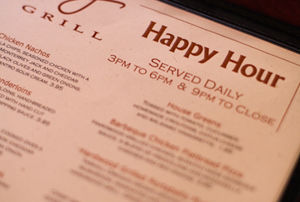Eat Their Words

Image: Chelsea Fitch
WHEN PORTLAND Community College puts together its fall course list, perhaps it should offer our local chefs a free class in menu writing, because these days menu scriveners have, in our opinion, gone a little OTT with fanciful language. One hundred years ago, food didn’t require adjectival frippery. Back then, menus were as simple as the fare: rack of lamb, broiled lobster. But by the early 1960s, menus began employing words like “deluxe” and “famous.” Later that decade, as restaurants were swept up in Julia Child’s Francophilia, beef tenderloin turned into tenderloin en brochette, and diners without a minor in French endured embarrassments when attempting to order a simple poisson. Then, in the ’70s, the Alice Waters cult caught on, and the linguistic results linger still: Some of Portland’s restaurant menus are so bloated with ingredients’ origins that they seem to include everything but the type of knife used to cut that Walla Walla sweet onion grown in Washington’s Palouse region. It’s not that we don’t appreciate our farmers, but sometimes we just want to know what we’re about to eat. Below, we unleash our inner literary critic on a few restaurants that may get an “A” for their delicious food, but that need a little tutoring in the description department.
JAKE’S FAMOUS CRAWFISH 401 SW 12th Ave
While the historic establishment generally keeps its entrée descriptions within reasonable lengths (“Jake’s Etoufee [sic]: Crawfish, Chicken and Shrimp in a Rich Nut Brown Sauce”), its dessert menu could do with a little culling. Exhibit A: “Chocolate Bag Filled With White Chocolate Mousse, Oregon Raspberries, Blueberries, Marionberries, and Topped With Fresh Whipped Cream, Served With Fresh Raspberry Coulis.” Between the time it takes you to read it, repeat it to your tablemates, and explain to out-of-towners what a marionberry is, you actually might be hungry enough to eat something called a “Chocolate Bag.” Grade: B
WILDWOOD 1221 NW 21st Ave
Almost every entrée on this menu includes the name of the vendor, farm, or field that at least one of the ingredients came from: “Milk Braised Sweet Briar Farms Pork Shoulder: potato dumplings, fava beans, wilted spinach and crushed Ayers Creek loganberries,” for example. While we appreciate knowing where our food came from, Wildwood might consider running the vendor names along the bottom of the menu to save us from having to untangle the entries—and to avoid unfortunate combinations like “Tandoor Roasted Cattail Creek Lamb Leg.” Grade: B
LE PIGEON 738 E Burnside St
So we’ve already said that we like sparse language on our menus. But a recent Le Pigeon menu averaged fewer than five words per entrée. That paucity of words might seem refreshing, but good luck at guessing how “Sea bass, leeks, snails, potato” or “Quail, squash, marrow, cherry tomatoes” might actually come together on a plate. How about mixing in a participle or two? What about an adjective? Maybe the name of the restaurant should just be “kitchen, tables, Burnside.” Grade: C
CLYDE COMMON 1014 SW Stark St
This place gets it right with entrée descriptions that manage to say a lot in simple, clear language. For example, “seared chicken thighs.” Now let’s face it, few of us really crave the part of the bird that’s usually left at the bottom of the eight-piece chicken bucket. But the word “seared” elevates this potentially overlooked cut of poultry to a higher culinary plane, inspiring the image of perfectly crisp, browned skin (especially when served with “shaved beets, cilantro, yogurt, pistachios”). Grade: A




